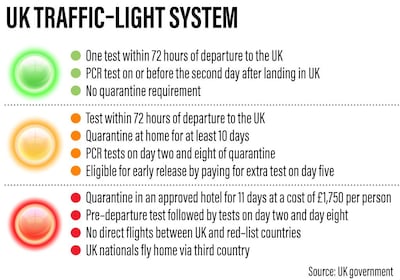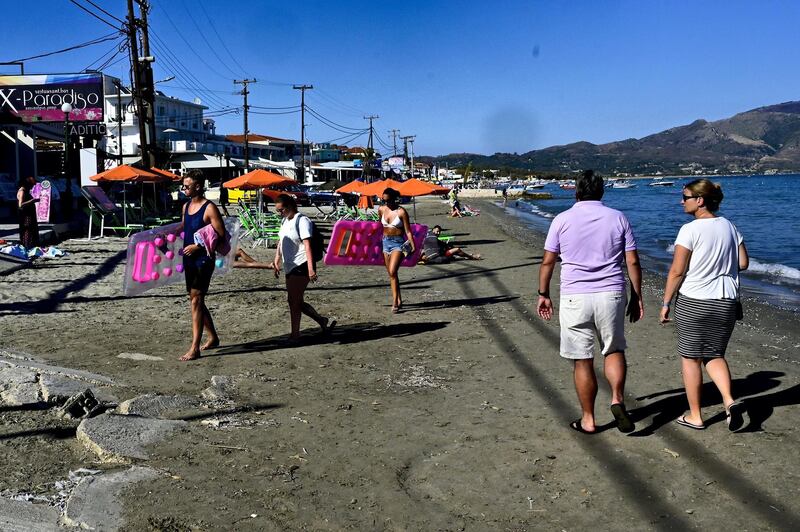The UK's traffic light system for international travel went live on May 17. Before then, people in England faced a £5,000 ($6,960) fine for travelling overseas without a valid reason.
The ban was primarily to stop Covid-19 variants of concern entering the country. And it is the threat posed by these variants which led to the initial green, amber and red lists being "necessarily cautious", said UK Transport Secretary Grant Shapps.
He said the lists would be reviewed very regularly, however.
What is the traffic light system?
It determines the level of coronavirus risk in overseas countries, which will be rated red, amber or green – with green representing the fewest restrictions for travellers and red the most.
The status is established by a variety of factors, such as the coronavirus case rate, quality of testing, number of vaccines administered and prevalence of virus mutations.
International travel: what do the rules mean if you are travelling to England?
Passengers who have been in a red list country in the 10 days before departure are required to enter hotel quarantine. Only British and Irish nationals, and those with resident rights, are allowed to travel to England from these countries.
Travellers from both amber and green countries must show a negative Covid-19 test before departure - but only amber passengers are required to isolate at home for 10 days.

What happens if I travel to a ‘green’ country?
Before you travel back to England you must complete a passenger locator form, have proof of a negative Covid test, and book and pay for day two and day eight tests to be taken upon your return.
What happens if I travel to an ‘amber’ country?
Holidaymakers in medium-risk, amber countries will need to take a pre-departure test, then self-isolate for 10 days upon return. In line with current guidance, on days two and eight of this period they will need to take a PCR test.
If they take a private Covid test on day five, they may be able to leave self-isolation if the result is negative.
What happens if I travel to a ‘red’ country?
Holidaymakers going to high-risk, red countries will be forced to enter the UK’s hotel quarantine system upon return for 11 days and pay £1,730 ($2,392) for the privilege.
It is only possible to be exempted from hotel quarantine in an emergency.
What is the green watchlist?
The green watchlist will identify countries most at risk of moving from green to amber status, and the government said it will not hesitate to change a country's status should data show increasing risk.
The watchlist serves as a warning to travellers that quarantine requirements could change.
Transport Secretary Grant Shapps said travellers would be given at least two weeks' notice of any change.
Which countries are on the green list?
Twelve countries or territories were included in the green light category allowing for relatively free travel.
The full green list: Portugal including the Azores and Madeira, Australia, New Zealand, Singapore, Brunei, Iceland, Faroe Islands, Gibraltar, Falkland Islands, Israel, South Georgia and the South Sandwich Islands plus St Helena, Tristan de Cunha, Ascension Island.
More on travel
'Time to book holidays in Italy': Tourism to resume from mid-May
EU to lift travel restrictions for vaccinated tourists
England to give travellers a fortnight’s notice of changes to quarantine-free green list






